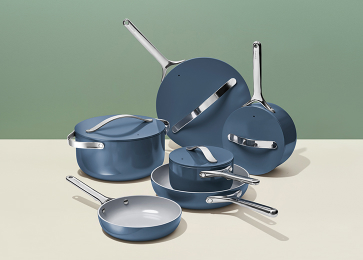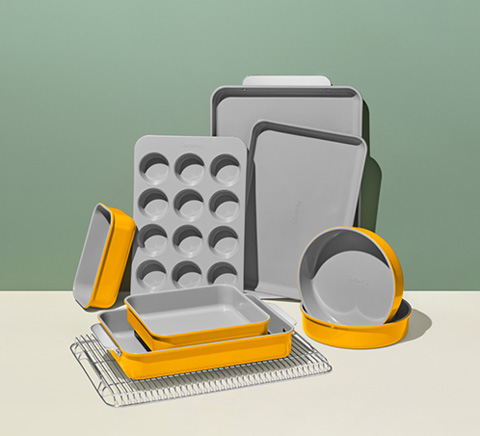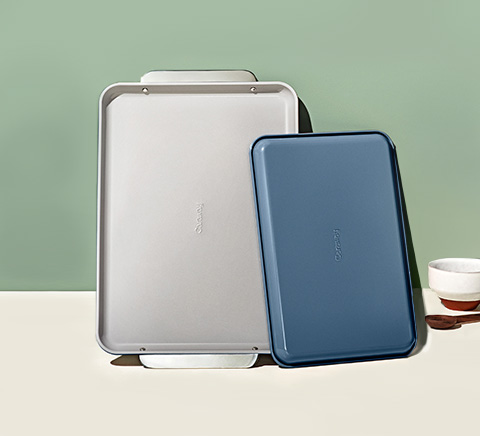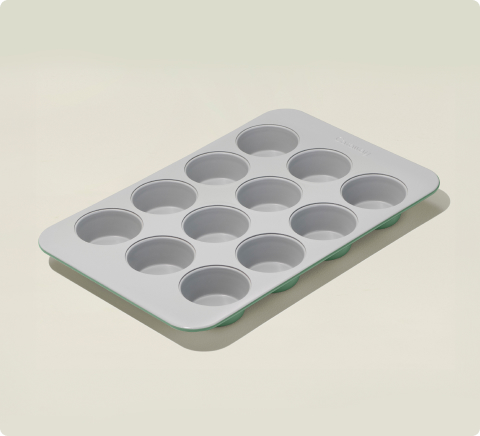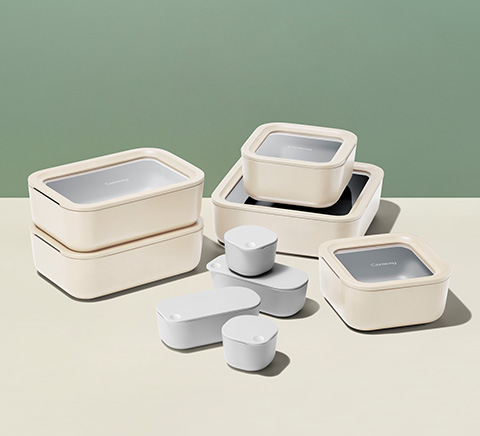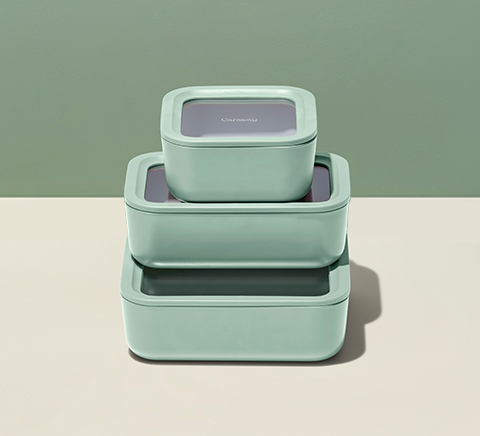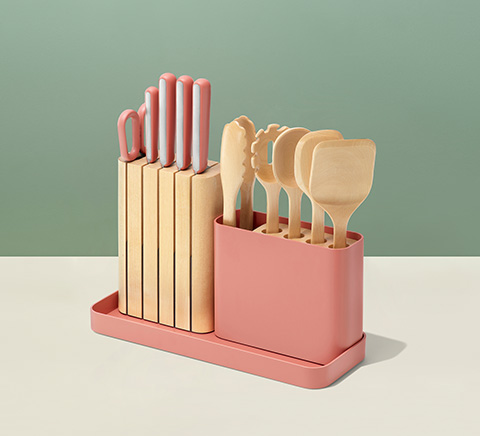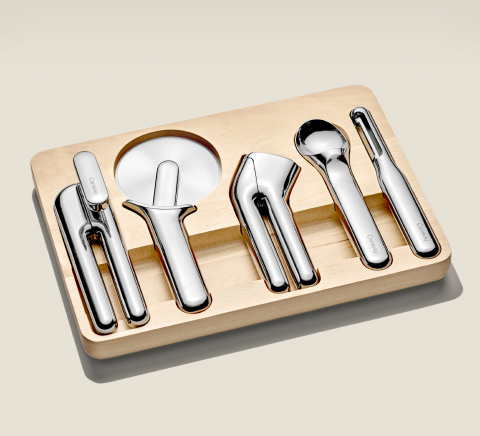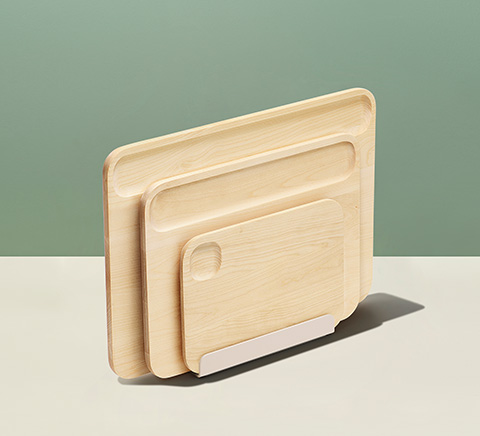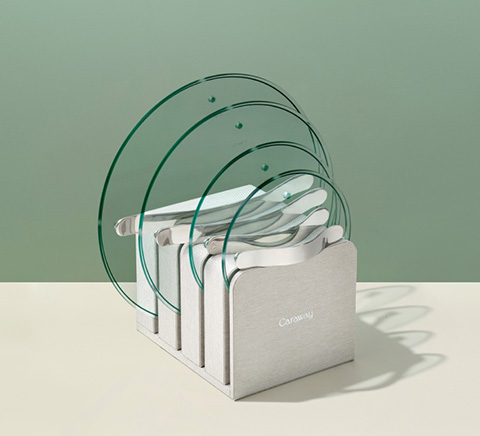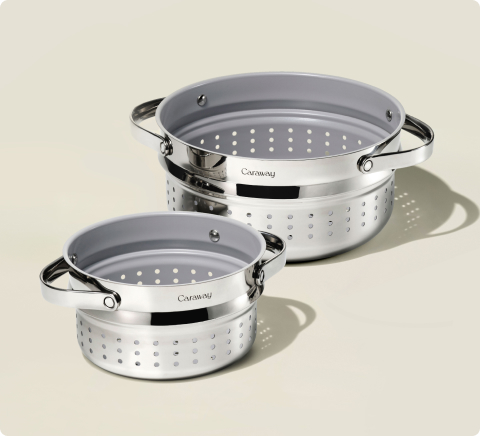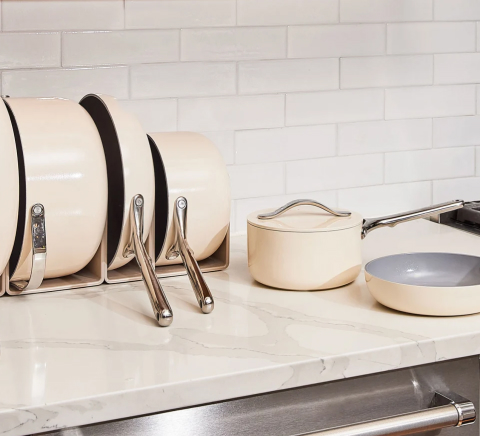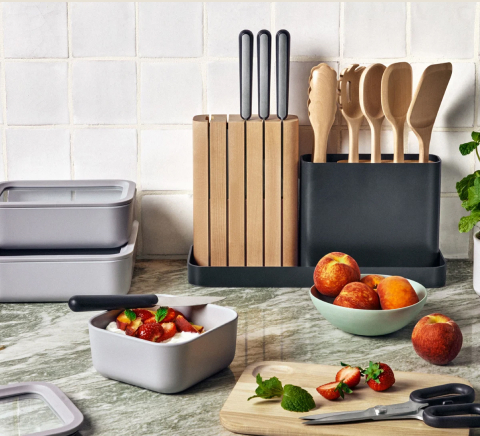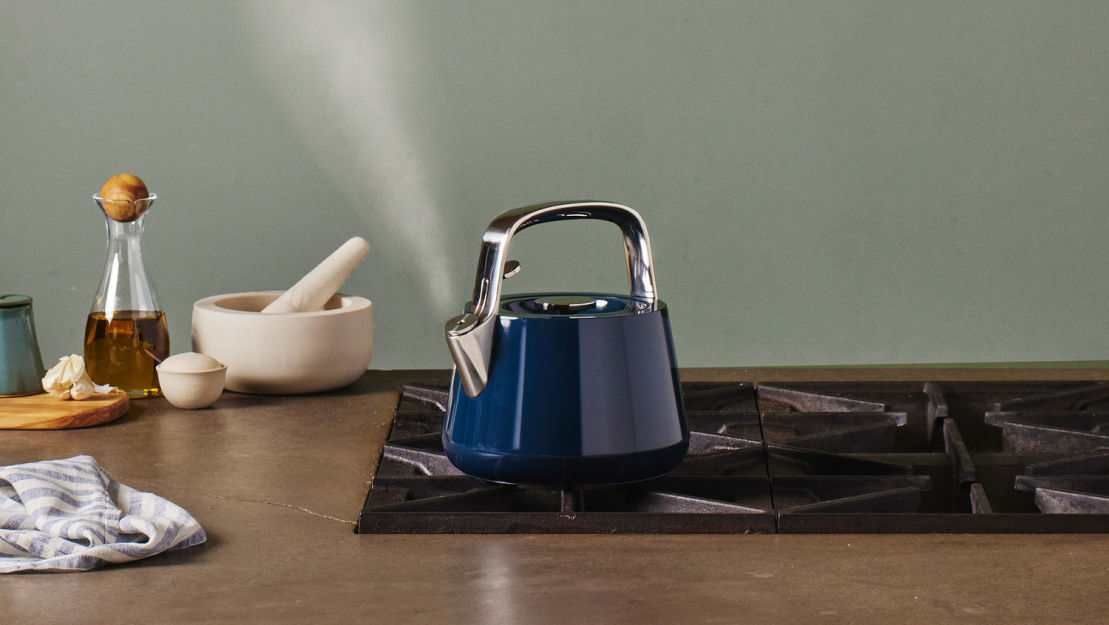In every kitchen, the humble tea kettle sings the soundtrack of cozy mornings and soothing evenings. At Caraway, we understand that this everyday ritual deserves the purest taste and safest experience.
Descaling and cleaning your tea kettle isn't just about upkeep --- it's about preserving those precious moments it helps create. Let's dive into how a clean kettle can be your best companion in the kitchen, ensuring every cup of tea is as perfect as the last.
Why Is Regular Cleaning and Descaling Important?
Keeping your tea kettle in pristine condition is crucial for several reasons:
-
Health and Safety: Regular descaling removes limescale build-up, which can harbor bacteria and other unwanted elements, ensuring the water you boil is clean and safe to drink.
-
Efficiency: A kettle free of limescale heats up more efficiently, saving time and energy. This efficiency can prolong the life of your kettle, making it a reliable tool in your kitchen for years to come.
-
Taste: Residue and limescale can significantly affect the taste of your tea or coffee, masking the flavors and aromas. A clean kettle means no interference with the taste of your beverages.
-
Preservation of Equipment: Regular maintenance prevents the build-up that can lead to permanent damage, ensuring your kettle continues to whistle beautifully on your stovetop.
Understanding the importance of a clean kettle highlights how this simple act of care can enhance your daily tea experience, keeping it safe, efficient, and delicious.
How Do You Know When Your Tea Kettle Needs Cleaning?
Knowing when to give your tea kettle a thorough clean is key to maintaining its longevity and ensuring the quality of your brew.
Here are clear signs that it's time to roll up your sleeves and start the cleaning process:
-
Visible Limescale Buildup: The most obvious sign is a white, chalky residue inside your kettle. Limescale is a deposit left by hard water and is particularly prevalent in areas with high mineral content in the water supply.
-
Slow Heating: If you notice your kettle is taking longer than usual to boil water, it could be due to limescale forming on the element, reducing its efficiency.
-
Off-Tasting Tea or Coffee: A clean kettle is essential for pure-tasting beverages. If your tea or coffee starts to taste odd or has an unusual aroma, it's likely time to clean your kettle.
-
Noisy Operation: Excess scaling can make your kettle noisier than normal during use. If the gentle boil has turned into a loud rumble, it's a sign that limescale is interfering with the heating process.
-
Spout or Lid Issues: Difficulty pouring or a lid that doesn't fit securely can sometimes be attributed to mineral buildup around these areas, affecting the kettle's functionality.
-
Cloudy Water: If the water in your kettle looks cloudy even after boiling, it's a sign of mineral deposits floating in the water, indicating it's time for a descale.
Recognizing these signs early can prevent the buildup from becoming severe, making the cleaning process easier and helping to prolong the life of your kettle.
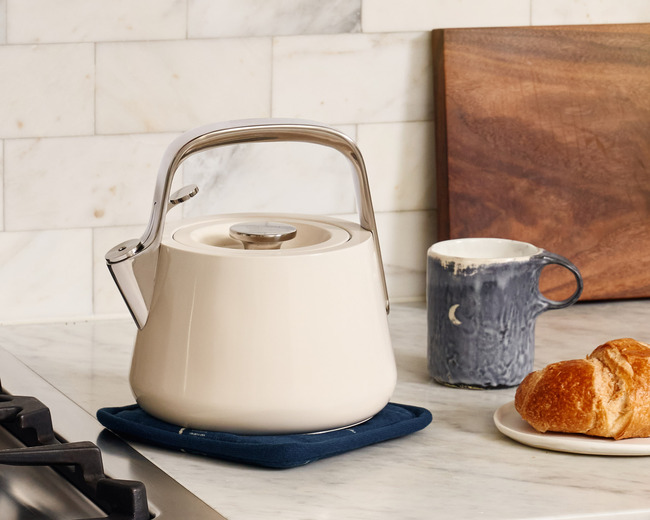
How Do I Descale and Clean a Tea Kettle?
You've identified the signs, and your tea kettle needs cleaning---now what? Restoring your kettle to its former glory is simpler than you might think.
Here are the steps to effectively descale and clean your tea kettle, ensuring it continues to be a centerpiece of your kitchen rituals.
Prepare Your Descale Solution
The first step in the descaling process involves creating an effective cleaning solution. You have a couple of options here: a vinegar solution or a lemon solution.
For vinegar, mix equal parts water and white vinegar to fill the kettle halfway. For the lemon solution, boil four cups of water with two tbsp of baking soda and three tbsp of lemon juice. Both methods leverage natural acids to break down limescale without introducing harsh chemicals into your kitchen.
Boil the Solution
Next, bring the descale solution to a boil in your kettle. This step helps loosen the limescale build-up, making it easier to remove.
Once boiled, turn off the heat and let the kettle sit with the solution inside for at least 30 minutes. For more stubborn deposits, letting it sit overnight will give you the best results.
Scrub the Interior
After the soaking period, the limescale should be softened and easier to remove. Using a non-abrasive sponge or brush, gently scrub the interior of the kettle.
Pay special attention to areas with noticeable buildup. A soft brush or toothbrush can be handy for getting into nooks and crannies without scratching the surface.
Rinse the Kettle
Once you've scrubbed away the limescale, rinse the kettle thoroughly with fresh water. Do a normal wash to ensure all traces of the vinegar or lemon solution are completely washed away to avoid any lingering tastes or odors.
Dry Thoroughly
After rinsing, dry your kettle with a clean, soft cloth or let it air dry with the lid open. Removing all moisture prevents new mineral deposits from forming and ensures your kettle is ready for its next use. Make sure the kettle is completely dry before you use it again to boil water.
Clean the Exterior
Don't forget the outside of your kettle. Use a damp cloth to wipe down the exterior. Always dry the exterior thoroughly with a soft cloth to prevent water spots.

For our Whistling Tea Kettle, a mild detergent can help remove fingerprints and smudges on the exterior, restoring its shine. Made with non-toxic stainless steel, our kettle at Caraway can last with fewer cleaning sessions than your average tea kettle.
Maintenance Tips To Keep Your Tea Kettle Spotless
So, your tea kettle is now sparkling clean, both inside and out. How do you keep it that way? Regular maintenance is key to preventing limescale build-up and ensuring your kettle remains a reliable companion for your tea time rituals.
Here are some tips to keep your kettle in its best condition:
Use Baking Soda for Tough Stains
For those stubborn stains that vinegar or lemon juice can't remove, create a paste using baking soda and water. Apply this paste to the stained areas inside your kettle, let it sit for a few minutes, then scrub gently with a non-abrasive sponge. Baking soda is a gentle yet effective abrasive that can help remove tough stains without damaging the kettle's interior.
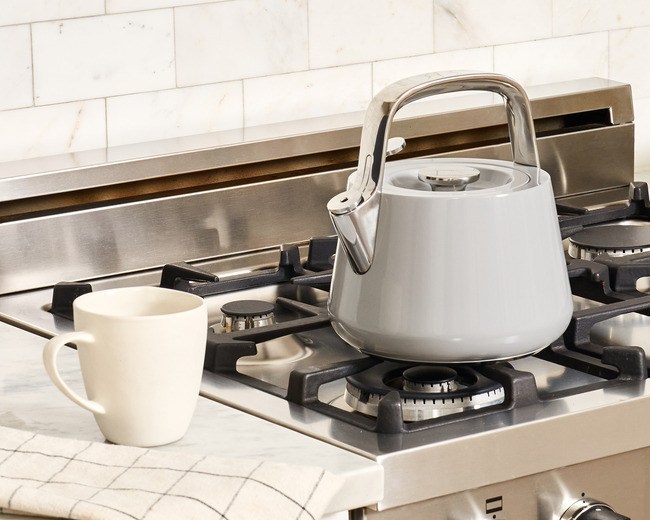
Opt for Filtered Water
Filtered water can significantly reduce the mineral content, minimizing limescale deposits. This simple switch can extend the periods between necessary descalings if you live in a hard water area.
Empty After Each Use
Make it a habit to empty your tea kettle after each use. Not only does this prevent unnecessary water from sitting and evaporating (which can lead to mineral buildup), but it also means you'll always be using fresh water for each boil.
Quick Wipe-Downs
After every use, give the exterior of your kettle a quick wipe-down. This prevents stains and smudges from setting in, keeping it aesthetically pleasing on your countertop.
Regular Rinsing
At least once a week, rinse the inside of your kettle with warm water. Swirl the water around to catch any loose debris or buildup, then pour it out. This simple action can help manage mineral deposits.
Store With the Lid Off
Consider storing it with the lid off after cleaning and drying your tea kettle. This practice encourages air circulation inside the kettle, preventing residual moisture from creating a conducive environment for mold or mildew growth. It ensures the interior remains dry and fresh between uses.
Monthly Descale
Even with preventative measures, performing a monthly descale with a natural solution can help manage any minimal buildup. This routine ensures your kettle operates efficiently and prolongs its lifespan.
Inspect Regularly
Keep an eye on your kettle's interior and exterior. Regular inspections can help you catch any issues early on, such as the start of limescale buildup or wear and tear on the exterior, allowing for timely maintenance or cleaning.
Avoid Harsh Chemicals
Stick to natural ingredients like vinegar or lemon when cleaning your kettle, especially for descaling. Unlike some harsh chemical descalers, these are effective against limescale and safe for your health.
The Bottom Line
At Caraway, we're dedicated to enhancing your daily rituals with kitchen essentials that marry function with style, health, and sustainability. By following the simple steps and maintenance tips outlined, you can ensure your tea kettle remains a reliable, cherished part of your kitchen.
And when it's time for a new companion to help brew those perfect moments, consider the durability, safety, and elegance of our Whistling Tea Kettle. It's not just an investment in your tea time---it's an investment in a healthier, more sustainable lifestyle.
Cheers to many more soothing sips and cozy mornings ahead.
Sources:
Why Do Kettles Get Limescale? | AAA Water Systems
Home Cheats: 10 Cleaning Hacks To Remove Limescale | LifeHack
Scale Deposits | Water Quality Association
How to descale a kettle - the best methods using household products | BBC Good Food
